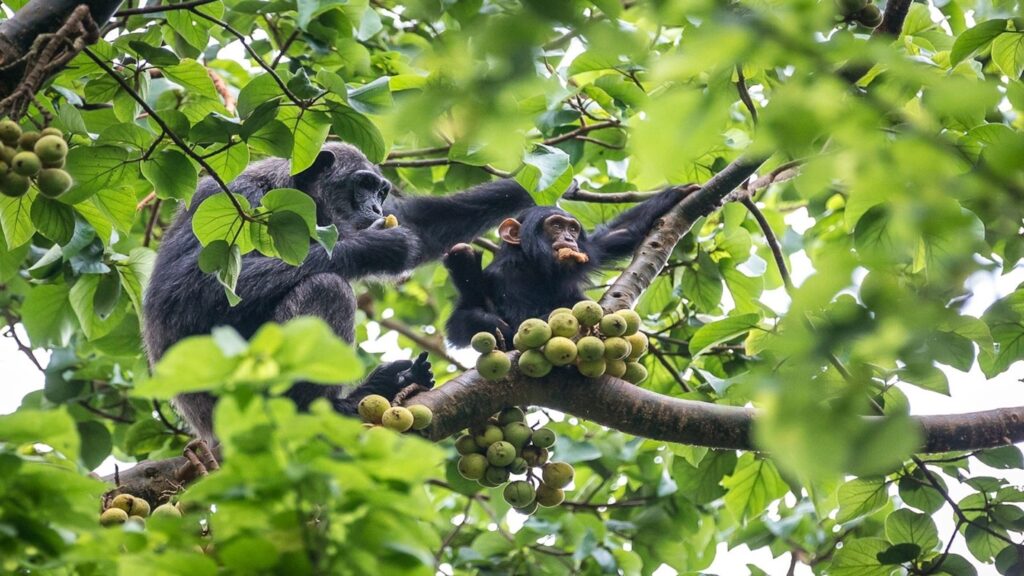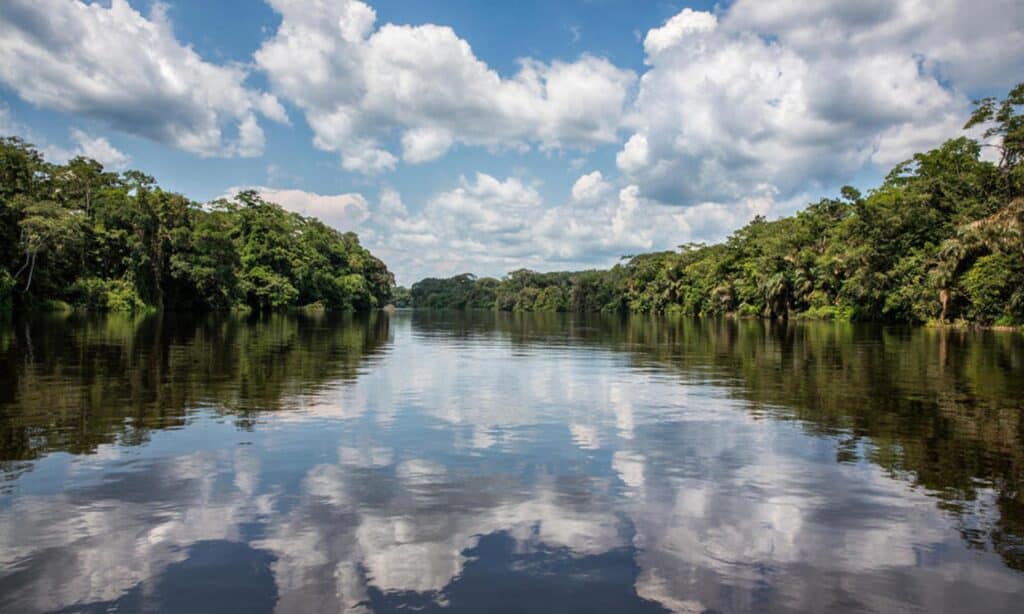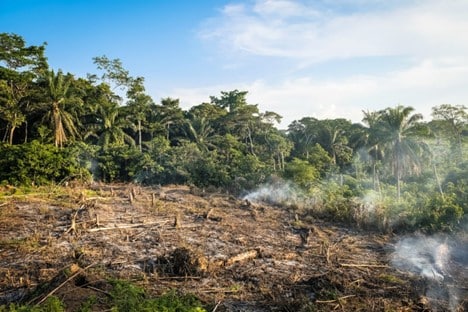
Biodiversity and Chimpanzee Conservation

Cover Image of a chimpanzee photographed by Steve Morello. Sourced from WWF.
By Marissa Pena
It goes without saying that we care about chimpanzee welfare here at Project Chimps! As longtime readers are aware, our mission has always been to provide exemplary lifelong care for former research chimpanzees. But with so many chimps in sanctuary, some readers have asked what this means for those in the wild.
Today, all four current subspecies of chimpanzees are classified as either endangered or critically endangered. Habitat loss, forest degradation, and other threats leave wild chimpanzee populations isolated and at high risk for dangers like poaching. Still, especially with specialized sanctuaries like this one, many people may wonder why wild chimpanzee extinction is still a concern. As long as they’re safe somewhere, shouldn’t that be enough?
Unfortunately, the truth is that declining wild chimpanzee populations are part of a global biodiversity crisis that’s currently affecting millions. When the only chimps we see are “third-generation Americans,” we might miss just how important they are in the wild. Even far away species can have a big impact on us, often in ways we may not expect. And by protecting wildlife, we’re also doing our part to protect ourselves and the planet we all share.
The Role of Chimpanzees in Nature

Chimpanzees are omnivorous frugivores, meaning that while they can enjoy a variety of foods, their diet is mostly made up of fruit. Because they’re known to eat their fruit whole, the seeds also pass through them as part of the digestive process. Although this may not sound particularly ground-breaking, it’s actually one of the most important processes for successful seed germination!
As the seed travels through a chimp’s digestive system, their gut is able to effectively break down the outer pulp. These ‘gut-passed’ seeds have a much higher chance of becoming seedlings, especially because the process also helps the seeds retain moisture and provides important nutrients.
While other species can also participate in seed dispersal, chimpanzees are one of the most effective. Thanks to their large body size and ability to travel long distances, chimps can disperse more seeds and at a greater distance than other animals. Longer distance dispersal helps to improve gene flow and lower competition between parent plants and new seedlings. So not only are chimps planting more trees, they’re also aiding in long-term survival by connecting distant tree populations!
Planting seeds may seem small on the surface, but it’s a vital part of the ecosystem where chimpanzees live. Chimpanzees have the widest geographic distribution of any great ape, inhabiting the forests and woodlands of West and Central Africa. They need trees in order to find food and shelter, as do millions of other animals native to those regions.
It’s also more important now than ever, as increasing levels of deforestation and environmental degradation threaten their homes. The Congo basin where many chimpanzees live is the largest carbon sink in the world, absorbing even more carbon than the Amazon. Not only is it known as the “lungs of Africa,” it also provides benefits for the entire world. It’s why if we continue to push species like chimpanzees to the brink of extinction, we’re ultimately hurting ourselves too.

Why We Need Biodiversity
According to Dr. Jane Goodall, biodiversity is “the tapestry of life.” The Earth is home to an estimated 8.7 million species of plants and animals. All these species work together to build millions of complex and interconnected ecosystems that sustain life on our planet. The role of chimpanzees in nature is just one example of how we all rely on biodiversity to survive.
Just as some species need tree leaves to eat, others use the branches for shelter or to build nests. If there are no predators to keep the population balance, it harms the rest of the ecosystem in return. Ecosystems need biodiversity in order to function. Different species fill different roles, and every species relies on another in order to perform that role effectively.
But while we recognize the value of biodiversity, we’re also seeing it disappear before our very eyes. Extinction rates are accelerating faster than ever before, with the UN identifying more than 1 million species currently at risk. And this time, experts are concerned that humans are pushing our ecosystems too far.
Dr. Lindsay Ratcliffe, who holds a Ph.D. in Environmental Studies and teaches Environmental Communication at the University of Texas at San Antonio, explains, “It’s tricky, because some degree of extinction is natural. For example, if a songbird species goes extinct where biodiversity is rich, other songbirds can fill that species’ niche. It’s called trophic redundancy, sort of like a failsafe backed into the system.”
“The problem is now that we’re not talking about a single, hypothetical distant species. We humans have massively sped up the normal background rate of extinction by many, many times. We’re not just forcing one species to go extinct—in many cases, we’re forcing the “failsafe” or “backup” species out, too.”
And while it’s important to prevent total species extinction, we also need to consider their impact on individual ecosystems. Species removal can trigger a “domino effect” that impacts the entire ecosystem, even if populations are fine somewhere else. There are multiple ways species interact with the rest of the ecosystem, and often we may not see the full picture until population levels begin to shift.

“One of the metaphors I see most often for ecosystems is that it’s like a Jenga tower,” Ratcliffe says. “If we keep taking species out, there’s going to be a critical point at which a threshold will be crossed and the tower will collapse. And we can’t say, ‘Well, it’s that last species that caused the collapse!’ because ecosystems are interconnected.”
“For me, it’s the uncertainty of this unprecedented situation that is the scariest part. We don’t really know what the impacts of these ‘cascading extinctions’ will be because we’re in uncharted territory. And I think that uncertainty of not knowing should give us pause and encourage us to act, if not to save the species for their own value and for themselves, but also because we don’t know when those systems will collapse and fail to support us too.”
Hope for Endangered Species
But even with our work cut out for us, the good news is that it’s work we’re willing to do.
In 2021, biodiversity loss was brought to the national forefront in an executive order signed by US President Joe Biden to conserve 30% of the nation’s lands and waters by 2030. The decision came as part of a global movement to conserve biodiversity and protect ecosystems around the world.
And there are things we can do too! Not everyone has the same levels of access and ability, but those of us who do can learn ways of reducing our carbon footprint. By educating ourselves about current conservation goals and driving factors of biodiversity loss, we can also support systematic change that improves the lives of animals everywhere.
It can be easy to lose hope sometimes, especially when it feels like there’s not a lot we can do. According to Dr. Ratcliffe, in these situations one of the best things we can do is simply look around.
“Get to know the endangered species in your own backyard! Take the time to learn about them and what’s driving them to extinction. Just being out there and spending time in nature, honestly that’s its own therapy, that’s its own joy,” she says.
“If you feel sad or overwhelmed, doing one thing can often make you feel a lot better, especially if that’s a helping thing like volunteering for wildlife rescue and rehabilitation or participating in a creek cleanup. It’s something small, but by connecting with other people who share those values, you can get a lot of energy and a lot of joy and hope.”
The truth is that even small steps can make a difference. Commitments like this wouldn’t be possible without a lot of caring and determined people pushing to make it happen. As of today, more than 100 countries from around the world have joined in, and it’s only the beginning!
Biodiversity is the heart of our planet. And as long as there are dedicated people willing to do what it takes to protect it, there’s always a reason to hope.

